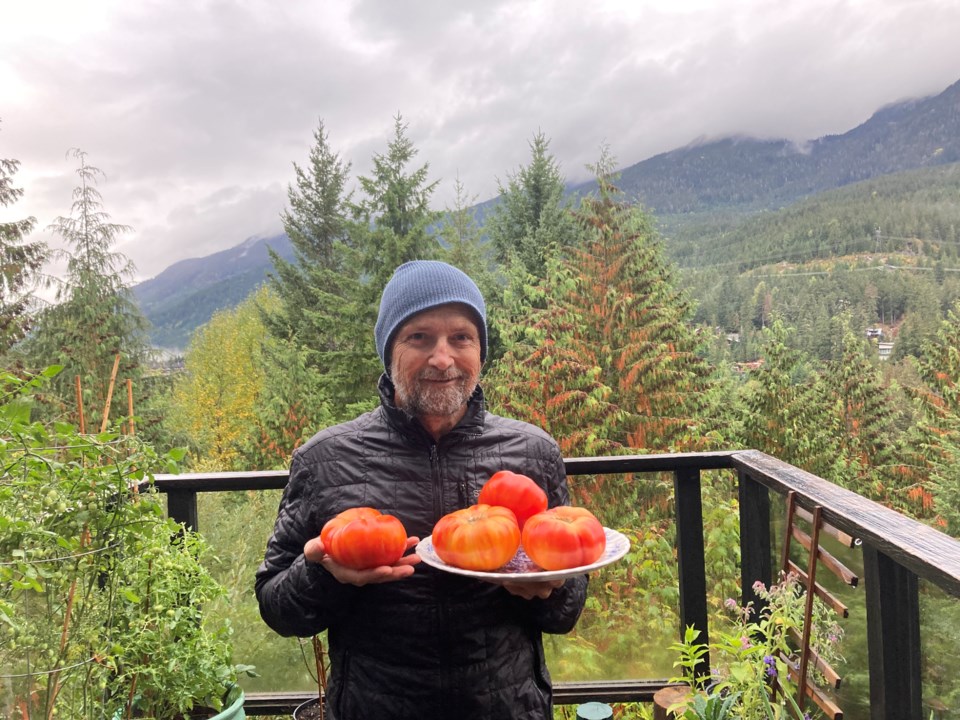Around this time of year, I spend an inordinate amount of time thinking about one of the wonders of the natural world. No, not rubber boas and sharp-tailed snakes—though they’re deep in the mental mix as well. The things I’m actually referring to may seem inert to some, but are, in reality, as full of life as my ophidian friends.
I’m talking about seeds.
Plant seeds, some small enough to require a microscope to see (that would be tropical orchids), contain everything needed to begin a new life. Much like an animal egg, inside a seed coat can be found a curled-up baby plant composed of embryonic root, stem and leaves. Also like eggs, a seed contains its own food supply—the endosperm—packed with nutrients to keep the embryo fed and support its early growth. With a hard coat protecting the delicate embryos within, seeds are unique structures able to endure drought, heat or freezing temperatures while remaining ready to spring to life when favourable conditions arise.
When a dormant seed is exposed to the right set of conditions, water and oxygen are absorbed through the coat. Remember those sprouting experiments with seeds, a glass and wet paper towels you did in Kindergarten? (Or university when you tried to grow weed?) As the embryo’s cells divide and enlarge, the coat breaks open and out pops the root, followed by a leaf-bearing stem shoot. As the plant develops, seed leaves—or cotyledons—absorb the remaining food supply and continue to nourish the plant. Sunlight (and decomposition, if you’re using composted topsoil) aid germination by warming the soil. Once leaves sprout, sunlight provides further fuel for plant growth through photosynthesis (if you need a refresher on this gem of high-school biology, it’s the process in which light photons spark carbon dioxide and water to combine and produce sugars then metabolized as energy for growth).
Fortuitously, I get a front-row seat to watch seeds do their thing all winter. My partner is a sprouting machine, keeping us in a steady supply of buckwheat, sunflower, broccoli and pea sprouts throughout the dark invernal days. Come the first hints of spring, however, we start thinking about putting seeds in the ground, what plants we should head-start indoors, and what kinds of things we want to grow this season (or at least try to grow; after all, everything is an experiment). This thinking is considerably aided by some stimulating plant porn—the West Coast Seeds (WCS) catalogue. This year’s cover motto is “Think Big, Act Small,” which pretty much sums our own approach to populating garden boxes in Cheakamus and on our modest townhome deck.
Like a restaurant menu rife with enticing photos, the cultivars listed and depicted in the WCS directory are a thing of instantaneous beauty, wonder and desire. How about some Jade Dragon Balsam Pear (a kind of squash)? Easter Egg II (a signature, multi-colour radish blend)? Avalanche (a snow pea, natch)? Red Candy Cane (pepper)? Igor (Brussels sprout)? Kuroda Nova (carrot)? Touchstone Gold (beet)? Rossa d’Inverno Rubino (onion)? Mortgage Lifter (an heirloom tomato)? Or the yet-to-be-named UC157 F2 (an asparagus hybrid)? We’ve lost track of the various things we’ve grown—or failed to grow—over the years, but suffice to say it has mostly been several different varieties of the usual suspects—garlic, zucchini, beans, radishes, Hakurei turnips, mustard, mesclun green mixes, lettuce, collards, choi of various kinds, potatoes (even when not expecting to grow them one always seems to pop up from previous years’ orphans), tons of basil, bazillions of tomatoes and more nasturtium than we ever know what to do with (you can make a pesto of the peppery leaves and eat the colourful flowers, but mostly they just vector in a lot of bees).
What really gets me thinking about seeds in spring, however, isn’t the predictable pas de deux with old garden friends, but the possibility of retrying things we haven’t yet mastered (there are learning-curve issues with many garden staples, some of which can be solved by cultivars, timing, head-starting or pH adjustments—plus some that are never solved at all).
We also look forward to digging deeper with some of the stranger things we’ve successfully experimented with (wasabi radishes, wasabi arugula—both as eye-watering as advertised) or didn’t expect to get away with in a town at 600-metres elevation but have nevertheless managed to pull off—things like half-kilo beefsteak tomatoes, eggplant (though a bit on the small side), cilantro (with a bumper crop of fragrant coriander seeds), spinach strawberry (it’s a thing) and, last year, the infamous Carolina Reaper chili, Guinness Book of World Records holder from 2013 to 2023 for hottest pepper at ~2.2 million Scoville Heat Units (by comparison, jalapeños are typically ~2,000 to 8,000 SHUs). Neighbouring gardeners have been able to grow things like tomatillos and cucamelons.
Of course, the same changing climate responsible for these oddball wins is behind our perennial failures with spinach, beets, green onions and a second crop of almost anything—the upper soil just gets too damn hot these days. Regardless, with all this in mind, I’ve perused the 2024 WCS catalogue and have my sights set on giving quinoa, amaranth, okra and shishito peppers a shot this season.
Will any of these be successful? Who knows. They’re but a seed of an idea—and always food for thought.
Leslie Anthony is a biologist, writer and author of several popular books on environmental science.




